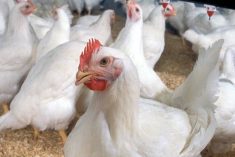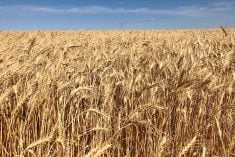SYDNEY, June 21 (Reuters) – Australia’s official agricultural forecaster on Tuesday said weak global wheat prices were driving farmers to plant other crops, capping the national output next year at 25.4 million tonnes, as much as 5 percent below some private forecasts.
Despite heavy rains creating favourable growing conditions, Trish Gleeson, director of agricultural commodities for the Australian Bureau of Agriculture, Resource Economics and Rural Sciences (ABARES), said the area planted in wheat is forecast to decline, reflecting higher returns from growing other crops.
“We’ve taken into account the seasonal rains, but the lower prices for wheat and higher prices for alternative crops, such as rotations into chickpeas, lentils and pulses must also be taken into account,” Gleeson told Reuters.
Read Also

U.S. grains: Soybean futures inch higher on China trade optimism
U.S. soybean futures firmed on Wednesday as traders remained hopeful for progress in trade talks with top soy buyer China and on a Japanese proposal to increase U.S. soy purchases, deals that could help U.S. farmers avert major losses.
ABARES in its outlook paper for the April-June quarter, however, held to its forecast for a 5 percent year-on-year rise in wheat production to 25.4 million tonnes in 2016/17, mainly due to an expected increase in the yields per hectare.
Wheat prices have staged a near-uninterrupted decline, owing to strong production among major exporters such as Australia, Russia and the European Union. Chicago wheat futures have dropped nearly a quarter since July last year.
Still, Rabobank on Tuesday said heavy rains had seen the Australian 2016/17 winter crop planted into soil with good moisture, and along with the prospects of a La Nina weather event, that had raised expectations of a 26.7 million tonne wheat crop, up 10 percent on last year.
“We are not expecting to see an increase in the area planted to wheat this season, with the increase in national production likely to be driven by yields, which are forecast to average around 2.09 tonnes to the hectare,” said Ben Larkin, Rabobank grains and oilseeds analyst.
The Bureau of Meteorology puts the chance of a La Nina at 50 percent. La Nina typically brings wetter than average conditions to Australian east coast.
National Australian Bank agribusiness economist Phin Ziebell forecasts a yield of 26.1 million tonnes in 2016/17.
“If anything, there is talk of an upside beyond where we are at the moment,” Ziebell said, due to favourable conditions during the planting season, especially in Western Australia.
Commonwealth Bank of Australia analyst Tobin Gorey is maintaining a “default” forecast of about 25 million tonnes for now, but said there was “an upside risk” of a higher crop if La Nina materialises.














